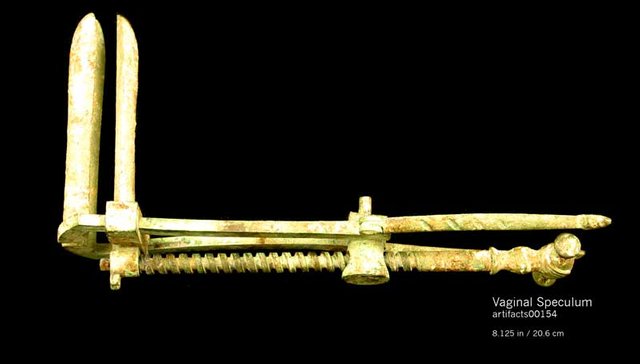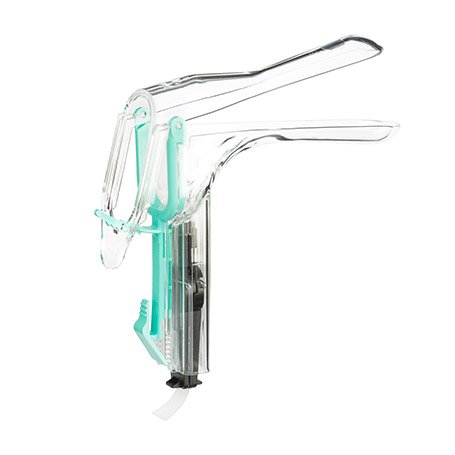Homeopathic cures, exhumed apparatuses, sexual taboos, flawed restorative morals of testing on slaves, and bunch of compelling doctors have made ready for the cutting edge instrument of today.
Early Beginnings
The vaginal specula that most OB/GYN experts use today has a long history, going back to antiquated Rome. The specialists that lived in Pompeii before the Vesuvius ejection were the first to utilize and make this therapeutic apparatus. Unique instruments were uncovered from their vestiges in 1770 at an area referred to by archeologists as The House of the Surgeon1, named for the measure of careful instruments uncovered at the site. Crude vaginal specula go back to the year 97 A.D. They were physically worked by a corkscrew, and made out of dovetailed valves that opened and shut to permit point by point examination. Their plan is like the ones utilized today.2

After the fall of the Roman Empire, in the ensuing Middle Ages (fifth to 15thcentury), close examination of a lady's body was viewed as corrupt or unthinkable. Birthing assistants were responsible for helping ladies amid labor and any vaginal distress or disease was treated with natively constructed natural cures.
Nineteenth Century
Refreshed forms of the vaginal speculum developed amid the 1800's. In 1821, Giuseppe Cannella, an Italian specialist, made a crossover of a speculum with a blade, bound to cut off the cervix when malignancy or uterine prolapse was analyzed. Notwithstanding, he never got the opportunity to work on living ladies. The book The Medical Intelligencer, distributed in 1822, states that "Dr. Cannella formulated and developed an instrument for extirpating the influenced parts, and evacuating them immediately. He has not yet had a chance of utilizing it by and by, yet from a few examinations on the dead subject."3
Men populated the time of nineteenth century doctors, and were debilitated from taking a gander at a bare female patient. Restorative examinations were done indiscriminately; the specialist would discover his way under a cover or the lady's dress while turning away. Additionally, there was mainstream thinking that a lady may transform into what creator Johanna Gohmann named "raving sexual crazy people" whenever permitted to be personally contacted by a man.4 Although Cannella figured out how to expel carcinogenic segments from the uterus, sadly he never had the chance to work his gadget on a living patient.
In 1825, a French birthing assistant called Marie Anne Boivin, imagined a vaginal specula and uterine dilators that could be in a bad way into the right spot and enlarged the vagina to permit close examination of the cervix. Her development advanced into the cutting edge bivalve speculum. She made incredible commitments to prescription, finding the reason for various kinds of dying, premature deliveries and ailments of the uterus.5 Marion Sims is credited as "The Father of Gynecology." He was the primary doctor to effectively work and fix a vesicovaginal fistula, a difficult complexity of labor where an opening develops between a lady's bladder and her vagina, prompting wild urinary and here and there fecal incontinence. A few creators and scientists have assaulted Sims' restorative morals, refering to prove recommending that he did medical procedures on dark slave ladies without their assent and without anesthesia. Two contextual analyses are outlined underneath:
- Anarcha gave a mix of vesicovaginal and rectovaginal fistula, which persisted 30 tasks before effective conclusion.
- Lucy's medical procedure endured a hour while situated staring her in the face and knees, and she almost kicked the bucket from blood harming when Sims utilized a wipe to empty pee out of the bladder.
In spite of the awful agony these ladies continued, they were at last restored. By 1883, the year Sims kicked the bucket, he had built up an overall notoriety as an extraordinary specialist and gynecologist. Statues of him and clinics named after him can be found in New York and in South Carolina.7 There are additionally a few uterine and vaginal careful instruments that bear his name.
The New Millennium
Women's liberation and sexual upset in late twentieth century achieved change in the manner in which gynecological issues were talked about, and treated. Progressively female doctors are currently opening facilities and composing books about ladies' wellbeing, life systems and the utilization of the speculum.

When we take a gander at the present current duck-charged speculum we can see its structure and shape have not changed much, put something aside for Thomas Graves' adjustments in the late nineteenth century.8Gynecologists currently have a few alternatives accessible. For instance, Exponiq offers a Graves style prepared to-utilize expendable vaginal specula made of clear plastic material that permits 360⁰ perceivability and diminishes warm stun. Exponiq likewise includes two lines of instrumentation with an extraordinary assortment of vaginal specula for each. There is the electrosurgical line, Exponiq Blue, produced with the most elevated quality hardened steel and a unique covering that counteracts transmission of RF current through the instrument. There is additionally the Exponiq Black laser line, which has an uncommonly planned polymer covering that lessens reflected laser vitality to short of what one tenth of one percent!
With such huge numbers of mechanical advances it is difficult to tell where the development of the vaginal specula and uterine dilators will lead. The female life systems has not changed in hundreds of years, so if upgrades in configuration have not fluctuated much, the methods utilized for conclusion and medical procedure likely will.
OTHER BEST WEB TAGS:
Genito urinary instruments and trocar
Thank you so much for sharing this amazing post with us!
Have you heard about Partiko? It’s a really convenient mobile app for Steem! With Partiko, you can easily see what’s going on in the Steem community, make posts and comments (no beneficiary cut forever!), and always stayed connected with your followers via push notification!
Partiko also rewards you with Partiko Points (3000 Partiko Point bonus when you first use it!), and Partiko Points can be converted into Steem tokens. You can earn Partiko Points easily by making posts and comments using Partiko.
We also noticed that your Steem Power is low. We will be very happy to delegate 15 Steem Power to you once you have made a post using Partiko! With more Steem Power, you can make more posts and comments, and earn more rewards!
If that all sounds interesting, you can:
Thank you so much for reading this message!
Downvoting a post can decrease pending rewards and make it less visible. Common reasons:
Submit